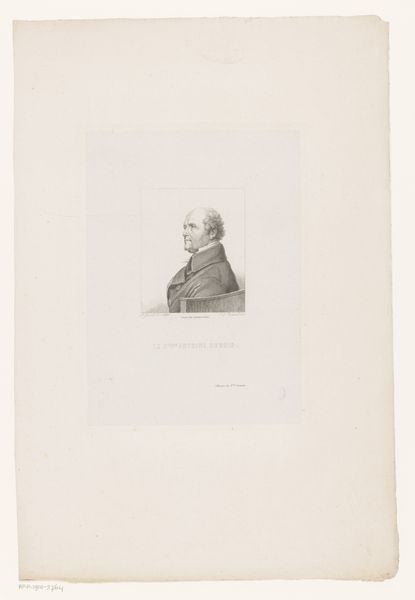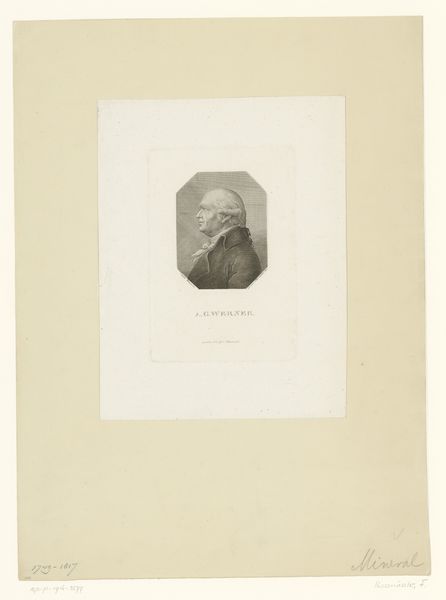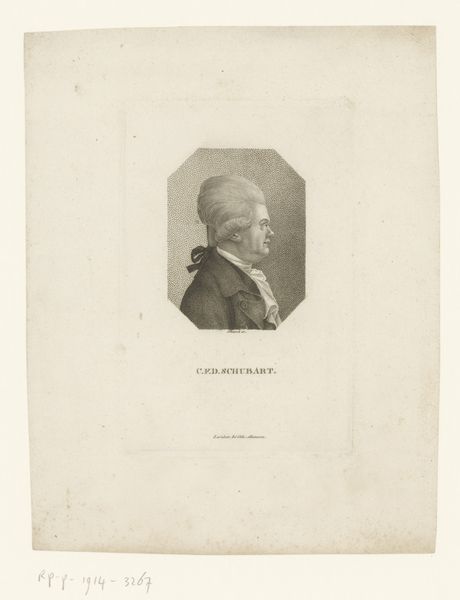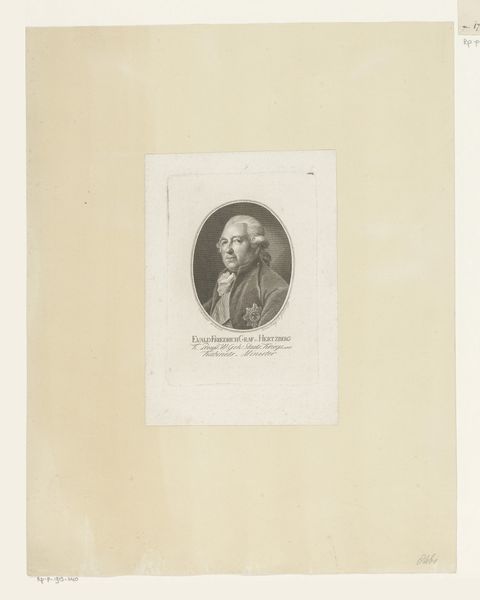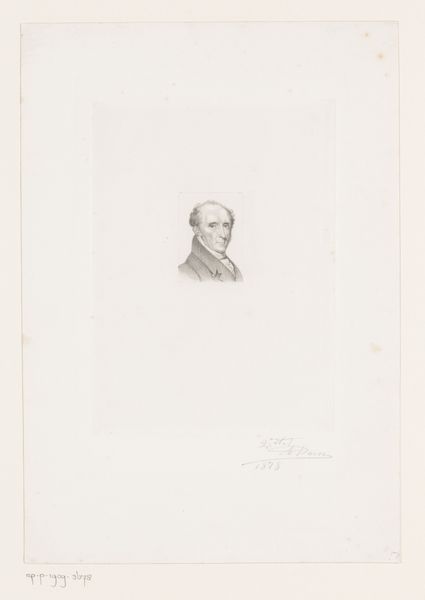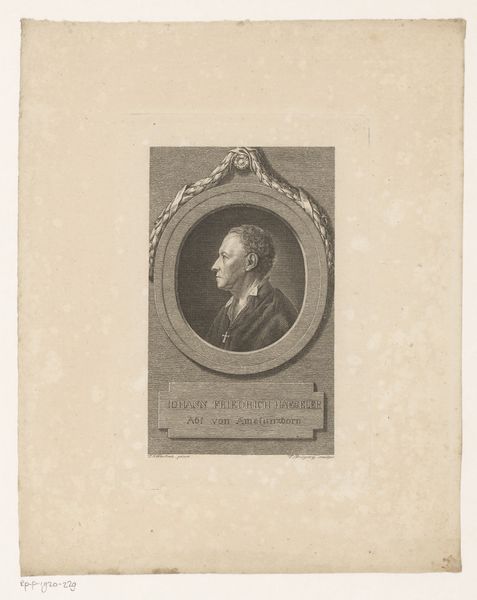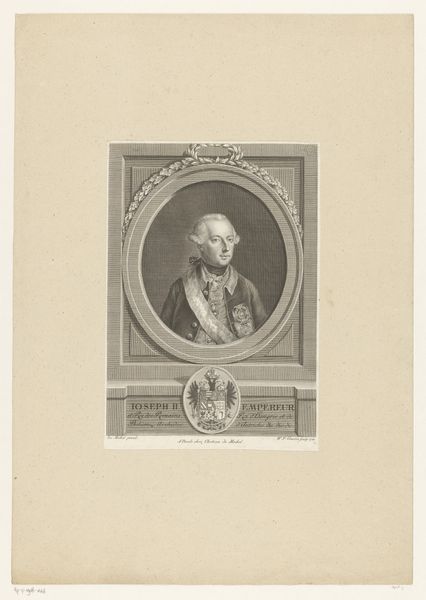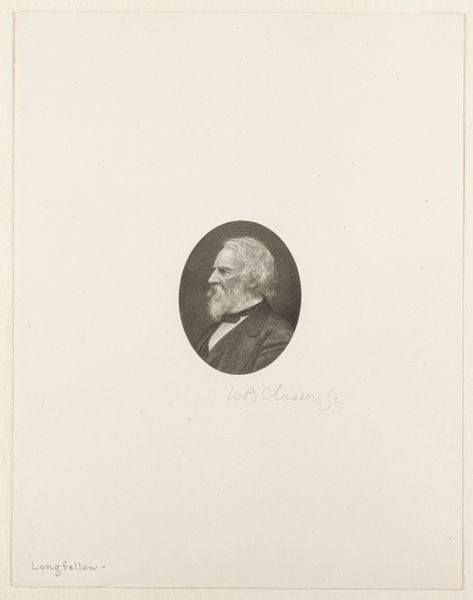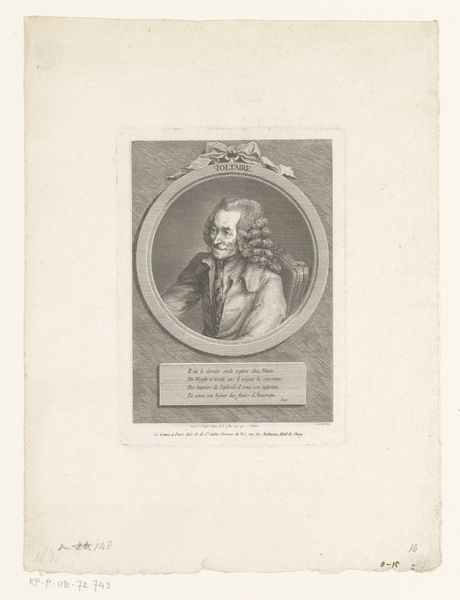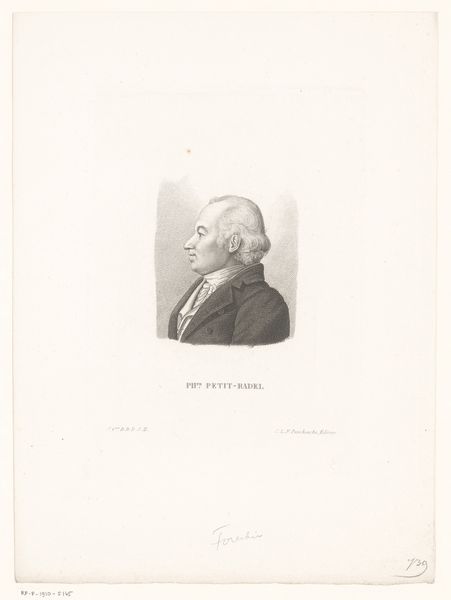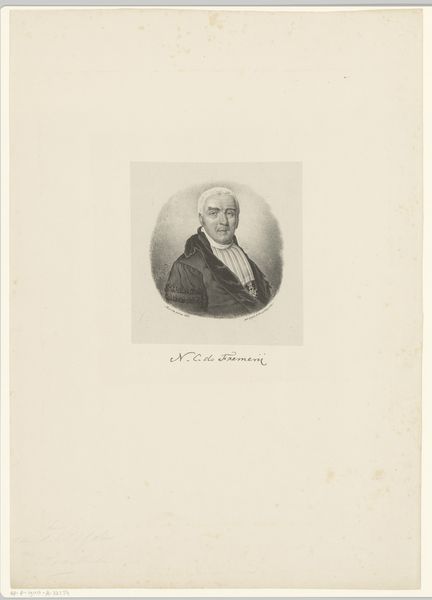
drawing, print, graphite
#
portrait
#
drawing
#
neoclacissism
#
negative space
# print
#
figuration
#
line
#
graphite
#
academic-art
#
realism
Dimensions: 302 mm (height) x 212 mm (width) (plademaal)
This print of Washington was made by Joel Ballin, likely sometime in the mid-19th century, using a process called stipple engraving. Stipple engraving involves creating a pattern of tiny dots on a metal plate, which then holds ink and prints an image. Unlike linear engraving, stipple allows for subtle gradations of tone, perfect for capturing the soft textures of skin and fabric. Look closely, and you can see how Ballin built up the image through careful accumulation of these marks. The technique demands immense patience and control. In the 19th century, printed images like this one were a crucial way of disseminating images, of turning leaders into icons, and creating a sense of shared identity. This print, then, is not just a portrait of Washington, but an example of how the graphic arts played a vital role in shaping public perception. It also offers an insight into the skilled labor involved in reproducing images before the age of photography, reminding us of the intimate connection between handcraft and mass communication.
Comments
No comments
Be the first to comment and join the conversation on the ultimate creative platform.
